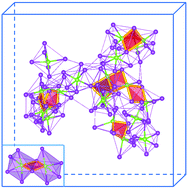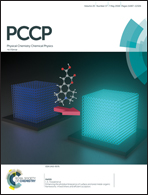Structural signature and transition dynamics of Sb2Te3 melt upon fast cooling
Abstract
Crystalline Sb2Te3 is widely studied due to its important applications in memory materials and topological insulators. The liquid and amorphous structures of this compound as well as the dynamics upon quenching, however, are yet to be fully understood. In this work, we have systematically studied the dynamical properties and local structure of Sb2Te3 at different temperatures using ab initio molecular dynamics simulations. The calculated structure factors agree well with the experimental results. The atomic number density and mean-squared displacement as a function of temperature clearly indicate three states as the temperature decreases, namely, melt, undercooled liquid and glass state, respectively. By analyzing the chemical environments and bond-angle distribution functions, we demonstrate that the most probable short-range motifs in the Sb2Te3 system are defective octahedrons, and they are connected with each other via four-fold rings. This interesting structural feature may be responsible for the high fragility and easy phase transition upon glass forming that is applied in memory devices.



 Please wait while we load your content...
Please wait while we load your content...